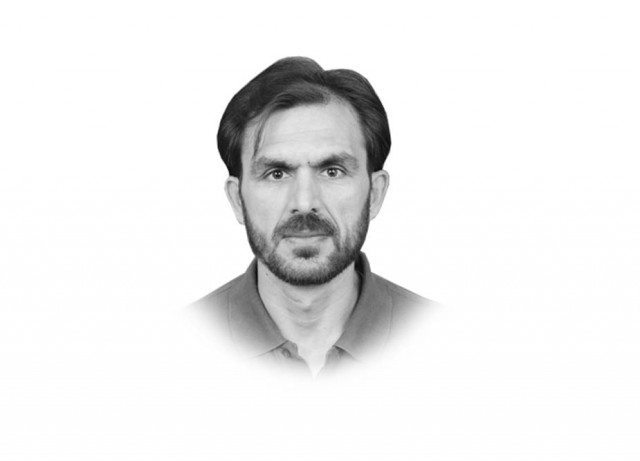Let’s work to correct our flaws
The two countries should develop a symbiotic relationship

The writer is the news editor of The Express Tribune
It wasn’t just fear of strategic encirclement; the quest for ‘strategic depth’ has also hugely influenced our Afghan policy. By ‘strategic depth’, our strategists mean a friendly territory where we could relocate military assets in the eventuality of Indian aggression. And this fear factor pushed us all along to seek a pro-Pakistan regime in Kabul. This unspoken desire was manifested in our Afghan policy. But military ruler Gen Ziaul Haq was honest enough to say it loud and clear in the 1980s: “We [Pakistan] have earned the right to have a friendly government in Kabul. We won’t permit it to be like it was before, with Indian and Soviet influence there and claims to our territory,” he said when Afghanistan was on the cusp of a civil war. To achieve this goal, we supported proxies, ethnic groups, and insurgents seeking to capture power by force. In the ’80s, Gulbudin Hekmatyar was our protégé. In the ’90s, the Taliban edged out Hekmatyar. And in the 2000s, we threw in our lot with a Taliban-Haqqanis nexus. We sought to dictate what was good for Afghanistan. Let’s be honest. Let’s admit that winning hearts and minds in Afghanistan was never a priority for us. Reaching out to all ethnic groups, investing in social sector and rebuilding infrastructure in the war-torn country have never been a priority. And the result is what we see today: an unfriendly, if not hostile, Afghanistan.

But Pakistan’s paranoia — as some analysts would call it — was not without a reason. It was set off by Afghanistan’s hostile policies. In the 50s, Kabul aligned itself with India and the Soviet Union to stymie the consolidation of the nascent state of Pakistan. Not only did Kabul contest the Durand Line, but it also laid claim to the Pashtun-dominated Pakistani territory and supported secessionist movements there. The Al Zulfiqar terrorist group was organised on Afghan soil in 1979 with active patronage from the Soviet-backed regime in Kabul. Al Zulfiqar used its sanctuaries in Afghanistan as a springboard to launch its ‘guerrillas’ into Pakistan. And then the ‘jihad’ started. Pakistan readily jumped into the fray and supported the ‘mujahideen’ against the Soviets. It had an enormous cost. The Soviet KGB, Afghan Khad and Indian RAW joined hands to unleash terror in Pakistan.
After the ouster of the pro-Pakistan Taliban regime in 2001, Hamid Karzai entered the Presidential Palace in Kabul where he stayed until 2014. During Karzai’s long rule, Afghanistan drifted away from Pakistan towards India. Kabul and Delhi signed a strategic partnership agreement in 2011. And subsequently, India unstrung its purse and gave Afghanistan $2 billion in aid — much to the consternation of Pakistani strategists. The worst was yet to come. The Afghan intelligence agency cultivated contacts with Pakistani Taliban after their rout from the tribal regions and offered them safe havens for attacks in Pakistan.
These controversial policies created a chasm of distrust between the two countries. However, they are like Siamese twins. Inseparable. Interdependent. They cannot alienate, let alone antagonise, each other. Brinkmanship and mutual recrimination will take them nowhere. They should stop using proxies to harm each other. Instead, they need to engage in a meaningful dialogue to assuage each other’s concerns. Afghanistan is a sovereign state. And we should treat it as such. We’ve ‘earned’ no right to decide who will rule in Kabul, or who should be its friend or foe. This, however, would have to be reciprocated. Afghanistan should also ensure its territory will not be used against Pakistan, by India, by the Taliban, or by any other country or non-state actor. The two countries should develop a symbiotic relationship and tap their full economic potential for the good of their people. This is the only way forward.
Published in The Express Tribune, May 19th, 2017.
Like Opinion & Editorial on Facebook, follow @ETOpEd on Twitter to receive all updates on all our daily pieces.














COMMENTS
Comments are moderated and generally will be posted if they are on-topic and not abusive.
For more information, please see our Comments FAQ